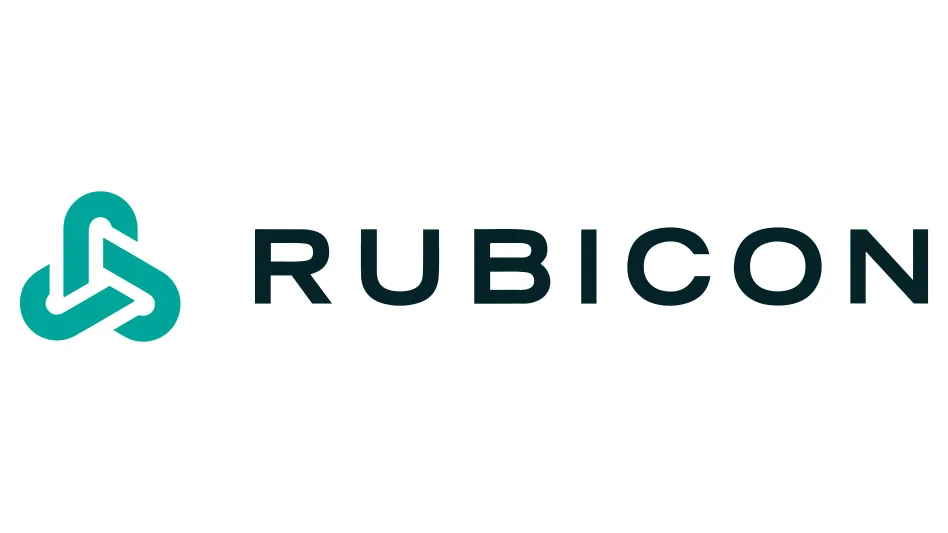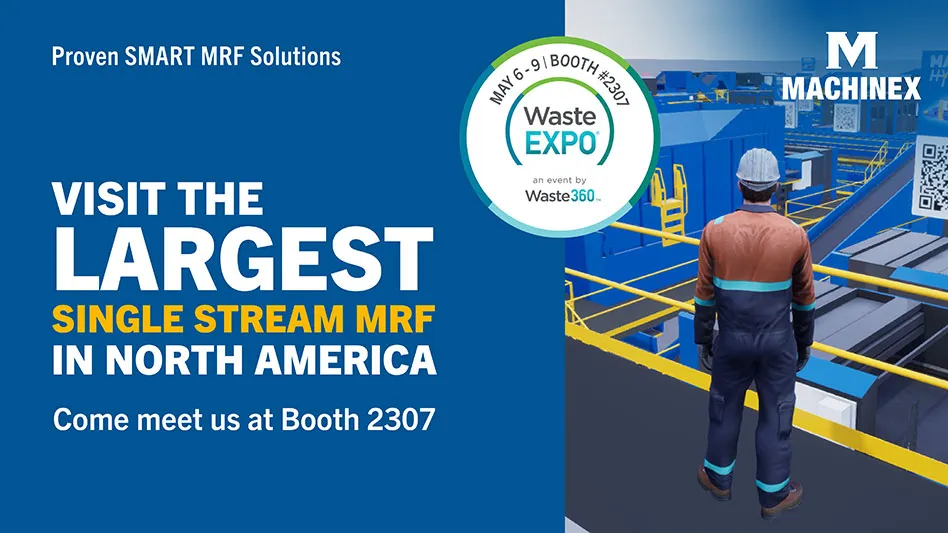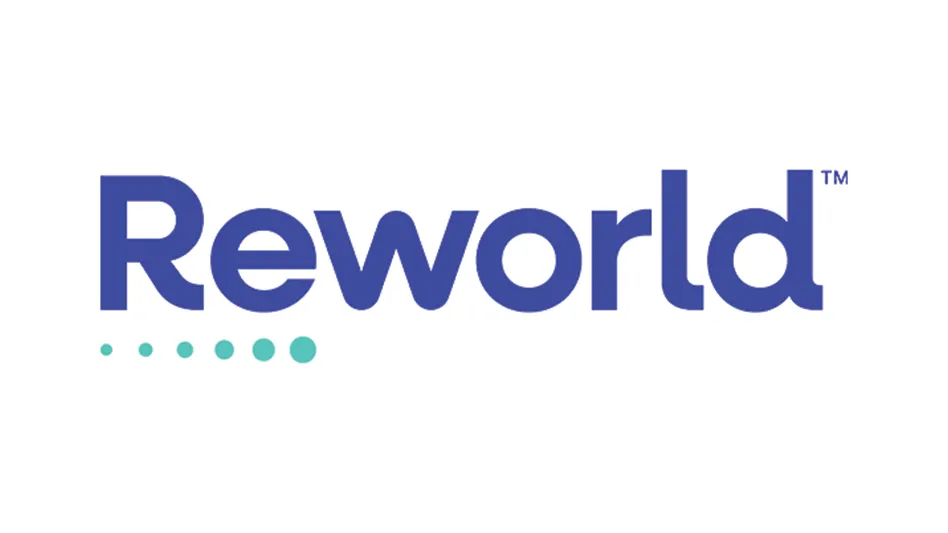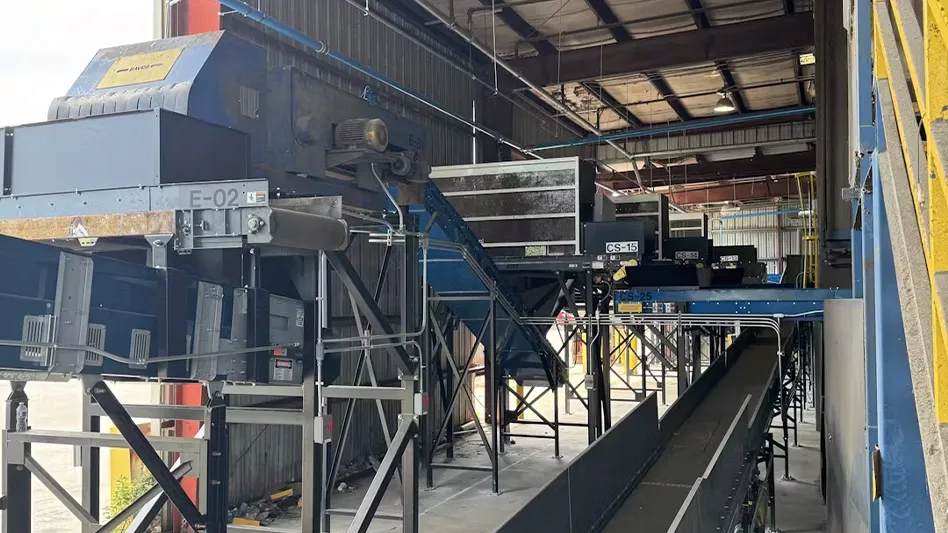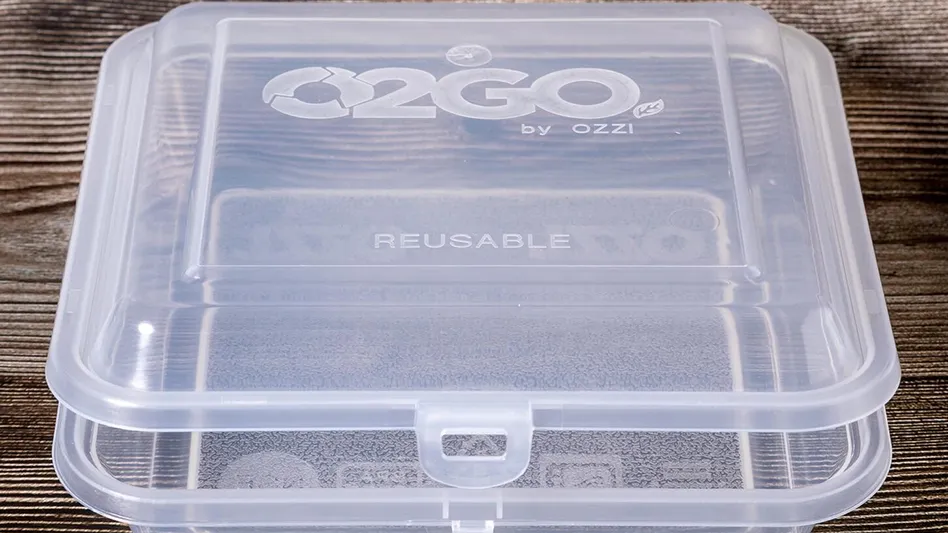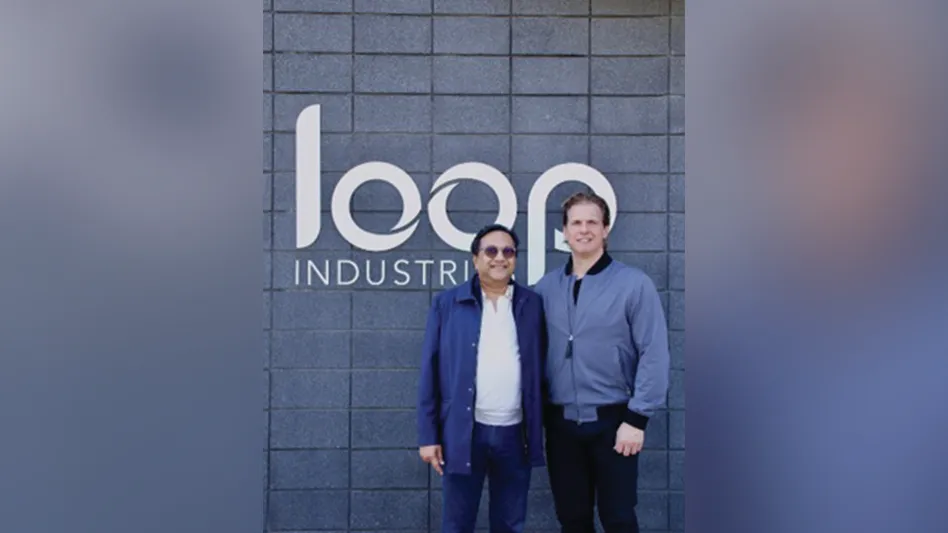Waste Management Inc. (WM) is a company with $11.8 billion in revenue and deep roots in the collection, transfer, landfilling and waste-to-energy conversion of municipal and commercial waste.
Throughout the past several decades, as the company’s relationship with its commercial customers and its residential contracts have continually spurred it to add recycling operations, WM has broadened its menu of recycling services.
The company has been collecting, processing and marketing recyclables under the Recycle America brand for 20 years, and its investment in recycling has grown to the point that it now operates more than 100 recycling facilities in North America.
On the company’s Web page (www.wm.com) and in its marketing materials it has adopted the slogan “Think Green.” A review of recent company initiatives and investments and a conversation with WM Recycle America officers Patrick DeRueda and Matthew Coz demonstrates that WM as a company is not only thinking green but also is enabling its customers to think green by making investments to offer a full spectrum of recycling options for them.
The anticipated result: “By 2020, we expect to nearly triple the amount of recyclable materials we manage, from 8 million tons to more than 20 million tons,” Waste Management states as one of its sustainability goals.
 TURNING UP THE VOLUME
TURNING UP THE VOLUME
As alluded to in the company’s sustainability goal, WM Recycle America is already a volume leader in North America in its collection, processing and trading of secondary commodities.
Because of old corrugated container (OCC) collection at industrial and commercial accounts and the traditional volume of old newspapers (ONP) and other grades in residential programs, scrap paper is the largest fraction handled. “Fiber is still well over 50 percent of what we see in the MRF stream, but we’ve seen percentages shift in the economic downturn,” says Coz. DeRueda predicts that the composition of what flows into material recovery facilities (MRFs) will continue to change. “By 2020, ONP could be 20 percent compared to what it is today,” he remarks. Other fiber grades are making up a larger share, and “plastics have become much more prevalent,” adds DeRueda.
Many of the company’s MRFs accept No. 3 through No. 7 plastic containers. DeRueda says WM is committed to handling these less frequently collected post-consumer containers. “We’ll be handling No. 3 through No. 7 as long our marketing team can continue to move it,” he quips regarding the importance of the marketing team to find buyers for these materials.
The company’s MRFs have long been the hubs of WM’s recycling activity, but DeRueda and Coz note that the “Think Green” mentality allows the company to engage in recycling activity well beyond the walls of its MRFs.
“In the new company growth strategy, it’s really incumbent on us to learn more about our customers and how to serve them beyond what we’re already doing,” says DeRueda.
Internally, WM also has identified broadening its recycling activity as a way to help the company’s bottom line, says DeRueda. “We as a company recognize the value of the commodities that are still in the waste stream we handle,” he says. “We did an assessment that showed that some $8 billion in recyclable material is currently being landfilled.”
One technique being put into action is what Coz and DeRueda call “transfer station mining,” or harvesting OCC, scrap metal and other recyclable materials at WM’s solid waste transfer stations. Traditionally, “it has been a pretty clean delineation between MRF and transfer station,” says Coz, “but as we harvest more material, we’re looking pretty critically at what we call transfer station mining.”
|
AT A GLANCE: WASTE MANAGEMENT RECYCLE AMERICA |
|
Officers: Pictured left to right: Patrick DeRueda, president; Matthew Coz, vice president of growth, commodity sales and marketing (Photo by David Edmonson.) Locations: Headquarters and executive office in Houston; more than 100 material recovery facilities (MRFs) in the United States and Canada (map can be found here) No. of Employees: 2,600 Equipment: The company will have 36 single-stream MRFs operational by the end of 2010 and nearly 70 other recycling facilities outfitted with an array of automated sorting equipment, plus balers and mobile material handling vehicles Services Provided: Collection, hauling and processing of recovered fiber, plastic, metal and glass recyclables from commercial, industrial and municipal customers; electronics recycling; C&D recycling; battery and fluorescent bulb recycling; placement and supervision of “Dream Machine” kiosks |
BEYOND THE BASICS
Residential collection is the most visible aspect of WM Recycle America’s operations, but DeRueda and Coz cite commercial collection as an important and growing part of what the company does.
“We have a segmentation model for serving more commercial buildings with recycling service,” says DeRueda. He lists health care solutions, commercial properties, construction, public sector, manufacturing, industrial and retail/food as among those segments. “What you’ll hear from our employees serving those segments is that customers are asking for solutions to divert waste away from their MSW (municipal solid waste) stream,” says DeRueda.
It provides affirmation that although WM as a company landfills more than 60 million tons of waste each year and currently recycles 8 million tons, that ratio is shifting rapidly toward a higher number on the recycling side.
Having heard from customers that recycling is more important to them and having determined that WM can extract $8 billion worth of secondary commodities from what is being landfilled, the “Think Green” slogan takes on a cash-related second meaning.
WM is better positioned to increase its recycling volume after a 2009 restructuring of how Recycle America operates within the overall company, says DeRueda. Earlier this decade, the Recycle America Alliance (RAA) operated as a separate entity within the wider WM organization.
“We were always viewed as ‘those other guys’ from over in the recycling business by our co-workers in the hauling, transfer station and landfill operations,” DeRueda comments. “Now, we have an integrated strategy as far as collection, disposal, recycling, composting—I think it’s great. Now it’s all of us working together to drive value for the shareholder.”
The new structure has enabled Recycle America to work cooperatively with transfer stations to begin identifying and investing in recycling opportunities at those sites. The growth in the company’s C&D (construction and demolition) recycling segment has provided another opportunity for the different operating segments to work together to devise and budget for a way to divert recyclable materials in that sector.
“We’re being tasked to support the C&D arena,” says DeRueda. “Currently we have perhaps 5 percent of that market share. We’re investing now so when the building sector turns around, we’ll have the infrastructure in place to serve LEED (Leadership in Energy and Environmental Design) projects and gain market share.”
The wood, concrete, drywall, scrap metal and other materials generated at a construction site are not conducive to being handled within the existing MRF infrastructure, meaning WM is investing in new locations such as the C&D sorting facility near Portland, Ore., that opened in 2009.
WM also offers the Bagster® service (www.thebagster.com) to individuals and companies for the collection of C&D scrap at smaller work sites in a format that can be collected by the WM vehicle fleet.
The recycling of obsolete electronics is another effort that ties into serving both commercial and residential customers. And, like C&D materials, electronic scrap materials are not welcome as part of the mixed stream heading into WM’s network of MRFs. DeRueda notes that some 20 states have electronic scrap recycling legislation in effect and another eight or so are proposing such laws.
“We’ve been in the electronics recycling business for a decade now, and we’re bullish on the opportunity for our electronics group to expand and grow,” says Coz. He notes that WM has eight electronics recycling facilities currently.
|
TOP TO BOTTOM FAMILIARITY |
|
For those who fear that larger recycling companies may tend toward leadership that emphasizes banking or accounting experience at the expense of firsthand recycling knowledge, Waste Management Recycle America offers an antidote to those fears. WM Recycle America President Patrick DeRueda has held recycling and solid waste management positions since joining BFI Waste Systems in 1987 as a safety manager and district manager at the company’s Santa Barbara, Calif., location. DeRueda has been a WM employee since 2001, serving initially as a market area general manager in the West for WM operations in New Mexico and Tucson, Ariz. He was appointed to lead Recycle America as its president in 2005. WM Recycle America Vice President of Growth, Commodity Sales and Marketing Matthew Coz is responsible for the subsidiary’s secondary commodity sales, electronics recycling efforts and any acquisitions, mergers or divestitures undertaken by Recycle America. Coz’s recycling experience also dates back to the 1980s, when he started with the former New England CRinc organization before joining Waste Management in 2000. Prior to his current role, Coz was the vice president for Recycle America’s Eastern Group, for which he oversaw the operation of more than 20 recycling plants that processed more than 1 million tons of material annually. Among the lessons the duo say they have absorbed from a combined four decades in the industry is understanding how to operate in a down market and to appreciate the importance of researching emerging markets. “With emerging materials, we’ve developed a process in which the operations and the commodity groups jointly look at the particular commodity,” says Coz. “It requires some thoughtfulness, not just, ‘Our plants can’t handle it,’ or ‘Hey, we can sell it,’ but genuine communication between plant operators and commodity traders.” |
NOTABLE INVESTMENTS
In its collection of electronic scrap and its investments in the Bagster program, the LampTracker fluorescent bulb and battery program and new C&D facilities, DeRueda and Coz say WM is demonstrating the depth of its commitment to recycling.
“When you include land, the building and equipment, a MRF or C&D facility can run $18 to $20 million,” says DeRueda regarding the extent of WM’s investment in recycling operations.
In April of 2010, WM announced another major, high-profile initiative that it has launched in cooperation with consumer products giant PepsiCo.
In an effort to increase the collection of recyclable beverage containers, Pepsi-branded Dream Machine interactive vending kiosks will be placed in as many as 3,000 retail and public locations nationwide.
The machines will accept both aluminum cans—which are recycled at roughly a 55 percent rate—and PET bottles, which are recycled at a rate of just 27 percent.
“The Dream Machine recycling initiative will introduce thousands of new recycling kiosks in popular public venues, such as gas stations, stadiums and public parks, to make it more convenient and rewarding for consumers to recycle on the go,” the two companies state in a news release announcing the venture.
There is a charitable fundraising aspect to the initiative as well, with the Entrepreneurship Bootcamp for Veterans with Disabilities receiving a portion of the funds raised through the Dream Machine effort.
“This is a way to capture on-the-go bottles,” says DeRueda. “The beauty of it is we offer rewards, so when people drop off their bottles, the machine prints out coupons or rewards tickets.”
Adds Coz, “Not only does it engage the consumer at the store, but there is also an online component to it through our new www.Greenopolis.com interactive recycling community.”
The cross section of initiatives and the significant investments in recycling being made by WM demonstrates a series of actions that are accompanying the “Think Green” slogan. DeRueda says Recycle America is approaching its work with the confidence that the global market for secondary commodities is firmly entrenched and that Waste Management’s executives and board of directors are convinced that strategic business indicators point to increased recycling.
“We as a company see the value of the commodities in what used to be called the waste stream,” DeRueda remarks. “Our role in processing, separating and marketing those commodities is only poised to grow.”
The author is editor-in-chief of Recycling Today and can be contacted at btaylor@gie.net.
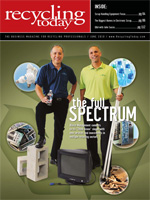
Explore the June 2010 Issue
Check out more from this issue and find you next story to read.
Latest from Recycling Today
- Novelis quarterly, full-year net sales down; CEO reports ‘strong improvements’
- Meeting the decarbonization challenge
- Cyclic Materials expands leadership team
- Paper cup acceptance at US mills reaches new milestone
- EPA announces $3B to replace lead service lines
- AMCS showcasing Performance Sustainability Suite at WasteExpo
- New Way and Hyzon unveil first hydrogen fuel cell refuse truck
- Origin Materials introduces tethered PET beverage cap
